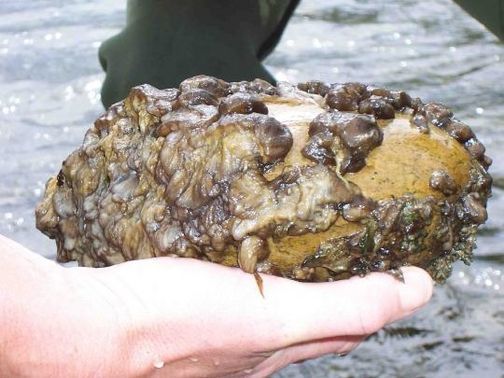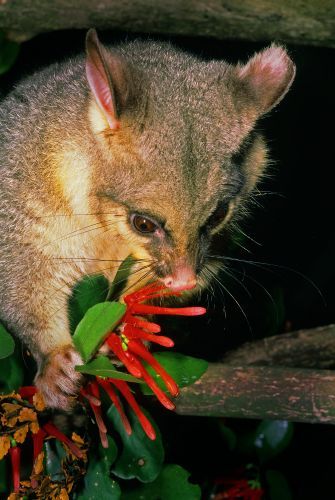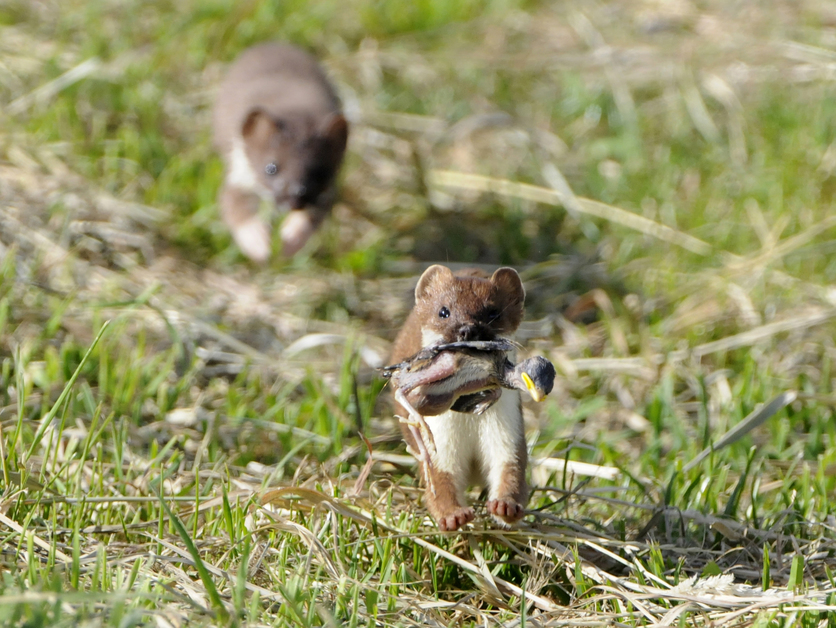Research in biosecurity covers many different branches of science, as well as economics and sociology to understand the impacts of an introduced pest. Scientists are involved in developing methods to detect foreign organisms, understanding how introduced organisms grow and spread and developing ways to control or eliminate the unwanted pest.
Sometimes it is important to identify where an introduced pest came from, or to separate closely related species. Genetic fingerprinting or examining the distribution of natural radioactive isotopes can help with this. For example the complete genome of the pea aphid, a major agricultural pest, was published in 2010, with help from a team of New Zealand researchers. This could lead to new weapons to fight .
Scientists also work on new ways to eliminate pest species, for example, developing poisons that target only the pest species or by identifying diseases of specific species that can be used to control pest numbers. There may be other organisms that specifically kill pest species, for example, certain predatory wasps lay their eggs in other species of insect, and the developing larva then kills the host.
The water-borne diatom alga didymo has quickly spread into rivers in the South Island since it was first detected in 2004. Scientists from local councils, the Department of Conservation (DOC), Ministry of Agriculture and Fisheries (MAF), Biosecurity, National Institute of Water and Atmospheric Research (NIWA) and Fish and Game NZ are involved in monitoring rivers to work out where it has spread to, and how it is doing so. Scientists are also involved in investigating ways in which it can be controlled and the effect it has on aquatic life. Public awareness campaigns are important in informing people on the risks and of the procedures needed to prevent boaters and fishers from spreading the algae.
New biotechnology techniques allow novel methods for dealing with pests, for example, New Zealand scientists at Landcare Research are working on species-selective toxins. The target of the vaccine would be proteins involved in reproduction, which are found only in possums, so that risks to other species are reduced. Research also has to be done on how to deliver new vaccines and poisons and on predicting how combining different control methods can be more effective.
Find out more about investigations into using biological control to combat our possums problem in this article, Biological control of possums.
A great deal of care has to be taken to examine all possible risks in producing biological controls, as past experience shows that release of one organism to control another can have unexpected and damaging knock-on effects (such as the release of stoats to control rabbits).
New and ongoing threats
In November 2010, the bacterium Pseudomonas syringae pv. Actinidiae (Psa) was discovered in a Te Puke kiwifruit orchard. Things looked grim for the kiwifruit industry. Find out how Plant & Food Research and industry partners fought the disease and returned New Zealand's kiwifruit production to full strength in the article Kiwifruit – learning to live with Psa. The article includes an interactive timeline of events, with links to the nature of science.
New Zealand needs to up its biosecurity game to protect the country from the next devastating pest threat, writes Dr Ang McGaughran in this article from The Conversation. The fall armyworm highlights why we urgently need to develop proactive biosecurity responses and tools.
Related content
See our collection of resources with biosecurity as a context for learning for this topic. Login to make this collection part of your private collection, just click on the copy icon. You can then add additional content, notes and make other changes, make the most of the collection's tool.
Useful links
Biosecurity 2025 is a partnership between individuals, iwi, hapū, non-government organisations, industries, businesses, community groups and central, regional and local government.
See the biosecurity section for information and recent research from Manaaki Whenua – Landcare Research.
This podcast series from Plant & Food Research explores how innovative science is pushing boundaries to protect borders, eradicate incursions and deal with disease.
The Ministry for Primary Industries (MPI) also has a section on biosecurity – haumaru koiora with lots of information for keeping Aotearoa safe.



